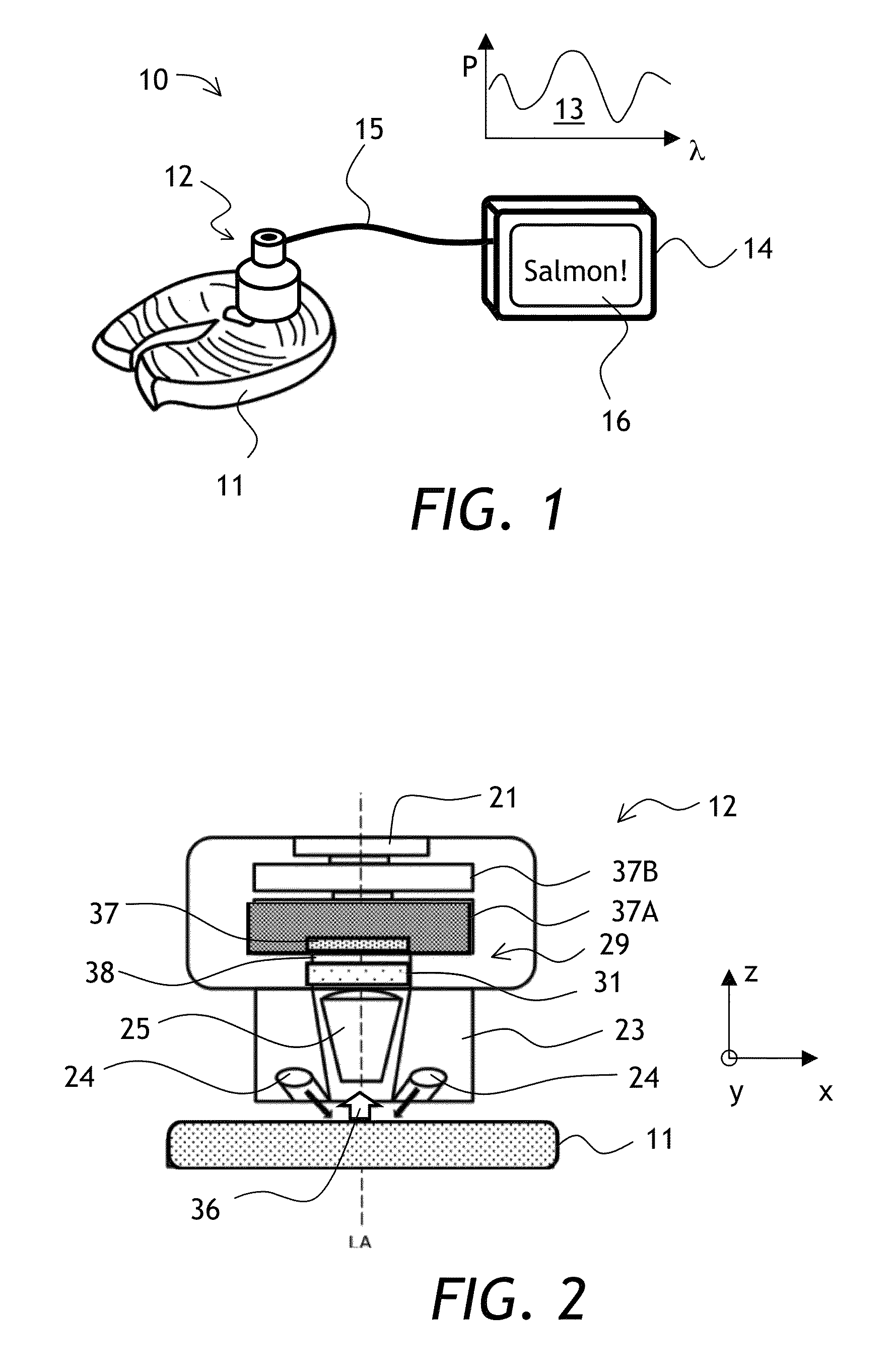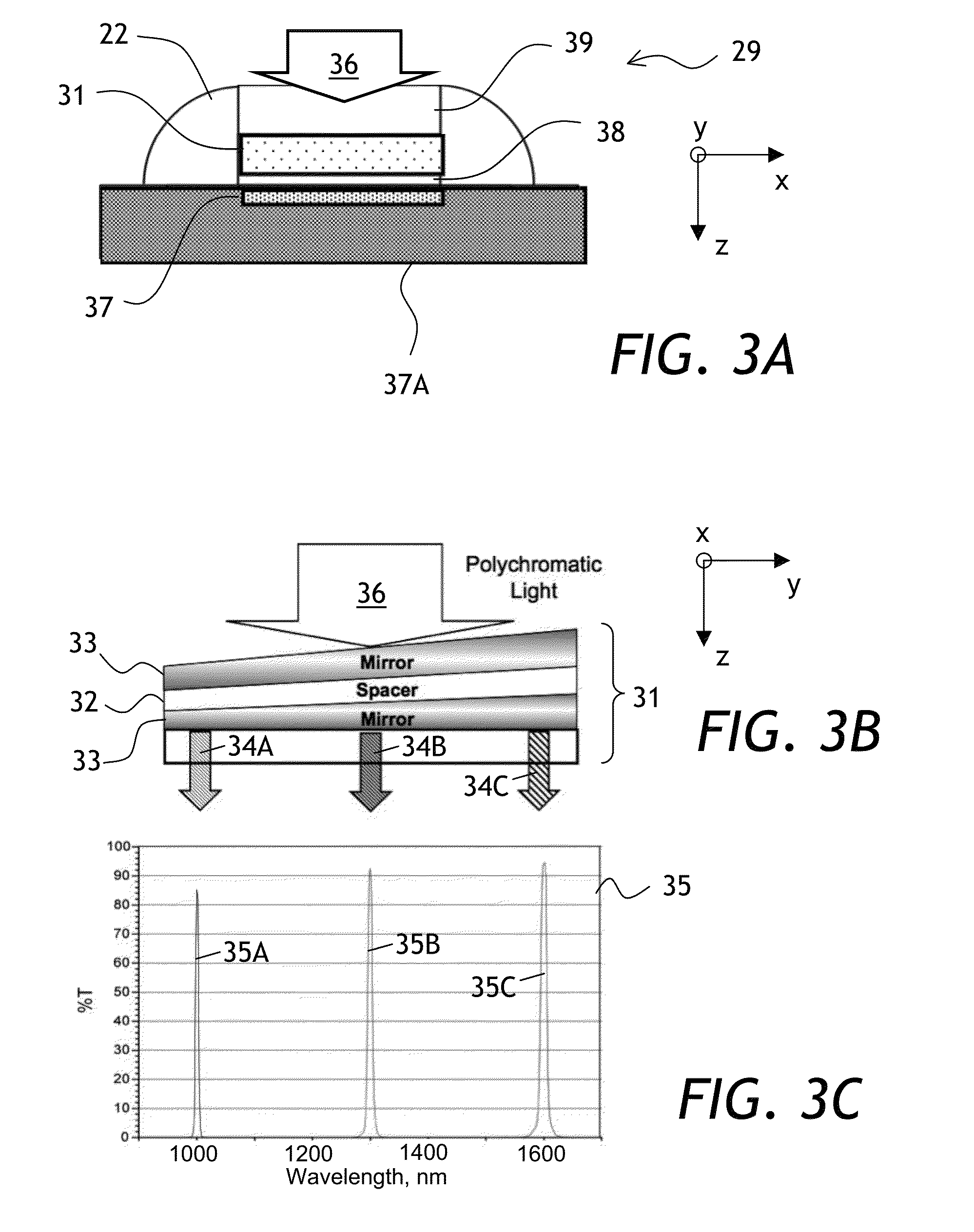Spectroscopic characterization of seafood
a spectroscopic and seafood technology, applied in the field of material characterization and identification, to achieve the effect of reducing the effect of surface texture of seafood samples
- Summary
- Abstract
- Description
- Claims
- Application Information
AI Technical Summary
Benefits of technology
Problems solved by technology
Method used
Image
Examples
experimental verification
[0066]A number of experiments were performed to verify that similarly looking, but differently priced fish species can be identified using a combination of NIR spectroscopy and multivariate regression (chemometric) analysis. Referring to FIGS. 6 to 8, three sets of different fish species were used. The first set included a whole red mullet 60A and a whole mullet 60B (FIG. 6), both skin and meat (the meat is not shown). The second set included: winter codfish skin 71A; codfish skin 71B; winter codfish meat 72A; and codfish meat 72B. The third set included: samlet skin 81A; salmon trout skin 81B; samlet meat 82A; and salmon trout meat 82B. As can be seen from the photos of FIGS. 6 to 8, even for a seafood professional such as a merchant or a cook, let alone a general public customer, the visual discrimination of the whole fish and the fish filets would be rather challenging. In FIGS. 6 to 8, the “A” group includes more expensive species 60A, 71A, 72A, 81A, and 82A, and the “B” group i...
PUM
 Login to View More
Login to View More Abstract
Description
Claims
Application Information
 Login to View More
Login to View More - R&D
- Intellectual Property
- Life Sciences
- Materials
- Tech Scout
- Unparalleled Data Quality
- Higher Quality Content
- 60% Fewer Hallucinations
Browse by: Latest US Patents, China's latest patents, Technical Efficacy Thesaurus, Application Domain, Technology Topic, Popular Technical Reports.
© 2025 PatSnap. All rights reserved.Legal|Privacy policy|Modern Slavery Act Transparency Statement|Sitemap|About US| Contact US: help@patsnap.com



